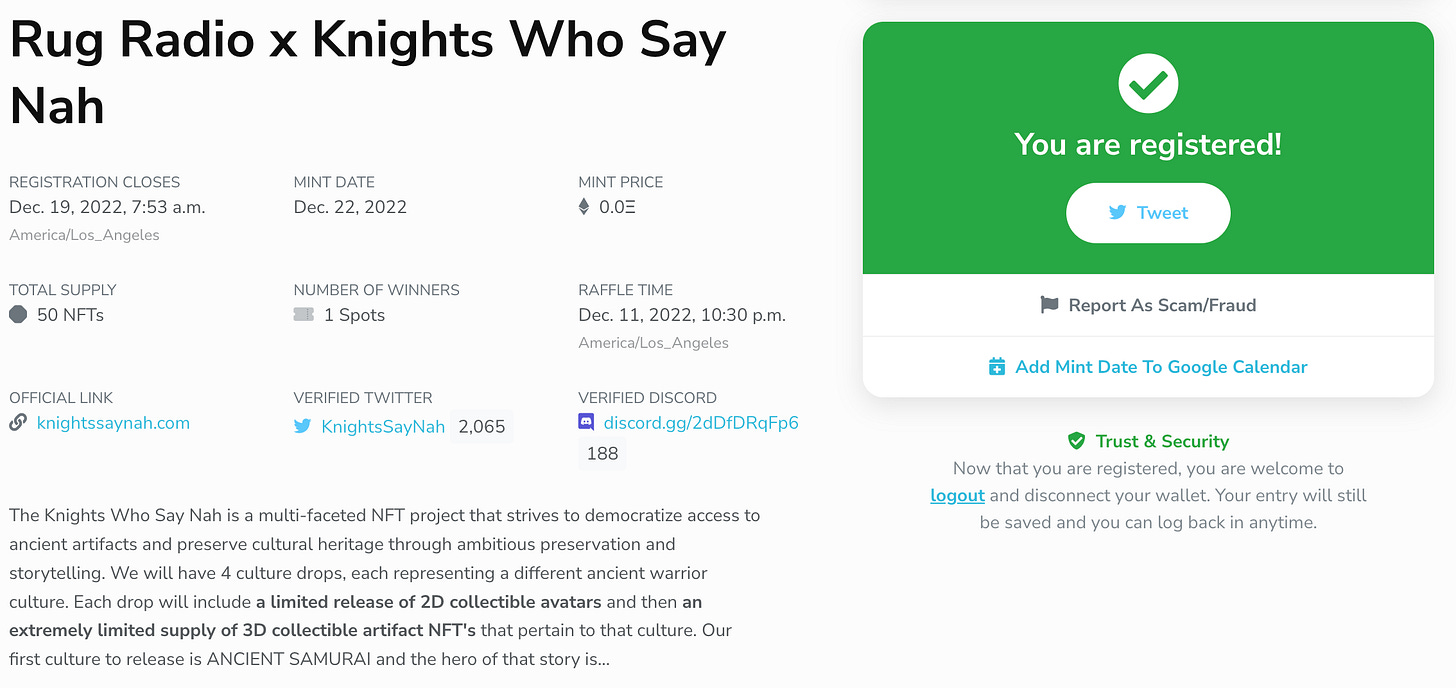Talently
This segment is sponsored by a content partner. This content is written with the same standards, style, and voice as my non-sponsored pieces. You can read more about my Partner Content process and guidelines here.
Recruiting involves several social contracts. We trust that:
During screening: Candidates are representing their skills, experiences, and accomplishments accurately in their resumes and online
During interviews: Candidates are representing their skills, experiences, and accomplishments accurately in conversation and possibly exercises
During reference calls: References are representing the candidate’s skills, experiences, and accomplishments accurately in conversation
These steps in the recruiting process won’t go away for sometime if ever. But what if there was a trustless way to augment the traditional recruiting process?
That’s where Talently comes in.
Talently is an on-chain LinkedIn which allows:
Talent to showcase their on-chain accomplishments more effectively
Recruiters to search for talent with specific criteria
Talently takes credentials and accomplishments that are already on-chain and turns them into a web3 resume.
Let’s start with my profile. If I search for tpan.eth, I can find my profile. Profiles have the following sections:
About - this will be empty if the profile is unclaimed and unedited
Experience - this will be empty if the profile is unclaimed and unedited
Skills & Credentials - POAPs and other on-chain credentials
Organizations - What organizations the wallet has voted or made proposals in
Smart Contracts - What smart contracts the wallet has deployed
Assets - What assets the wallet holds
Posts - What on-chain content the wallet has created
As an example, here’s a sample of what my profile looks like:
My skills & credentials section primarily consist of POAPs of events that I’ve attended while my organizations section contains communities I’ve voted in.
For someone that’s more technically inclined, we see a profile that is more active in the smart contracts section:
When wallets claim their profile, they’re able to customize their profile and add more color to the about and experience sections:
Users that claim their address can curate their profile sections by hiding certain on-chain activity as appropriate.
It’s also normal to have multiple wallets for different purposes, so users can merge wallet profiles to a single user as needed:
Profile claiming is verified through wallet signing for that specific address. As adoption scales, the platform will incorporate additional security features to ensure claimed and verified profiles are accurate.
A tool like Talently helps enrich resumes for talent and improve sourcing and vetting processes for recruiters. The team is working with industry recruiters to improve the platform for both sides of the table.
I’ve heard stories about conference speakers sharing how excited they are about web3 and how it’s the future. However, when they’re asked ‘What NFTs do you have?’ or ‘What contracts have you interacted with?’, they often fumble their response. They unfortunately haven’t actually engaged in the space beyond proclaiming buzzwords and broader industry themes.
Candidates can now add their Talently profile to walk the talk and show they are actual participants of the ecosystem.
On the flip side, recruiters and interviewers can have richer conversations with candidates about the on-chain resume, similar to how developers may include their Github profile in their resume.
The future of identity, qualifications, and credentials are becoming increasingly on-chain, and Talently is helping push that forward. In the meantime, I’ll be sprucing up my Talently profile 😉
More POAP growth examples
Last week, I shared a growth strategy involving POAPs featuring Ryan Carson and his Daily Dose Twitter Spaces.
I’ve come across a couple more variations of this strategy over the past few days.
Lost Realms
Lost Realms is a web3 game developed by Tribe, Inc. The team recently introduced a new mechanic: Relics.
The Lost Realm team has been holding a number of events on Twitter Spaces and Discord Stage events. Near the end of these events, the team shares a secret code word that members enter in the Discord’s ‘Secret Chamber’ channel.
Like the Daily Dose Spaces, the audience for these Relic events has rapidly grown from < 100 attendees to ~600. I expect attendance to continue growing as word of these Relics spread.
If successful, members will receive a Relic role specific to the event they attended.
So what do these Relics do? They act as raffle tickets members can redeem to enter giveaways for additional mints.
Knights Who Say Nah
Earlier this morning, I was on a Rug Radio Twitter Spaces that featured a new project, Knights Who Say Nah. The project aims to digitize ancient artifacts and turn them into NFTs that are preserved on the blockchain.
The team is incorporating the POAP strategy by partnering with Twitter Spaces and conducting giveaways through Premint:

In each space, the team drops a secret word that will allow listeners to mint the POAP. The same secret word unlocks a Premint link to enter a raffle for free mint from their collection.
When we compare these strategies to each other, the end goal is the same. However, the approach is different:
My main question and potential concern is around the quality of these audiences 🤔
That said, the large audience numbers don’t lie. I expect to see more variations of the above POAP strategies to draw larger audiences.
See you tomorrow!



















